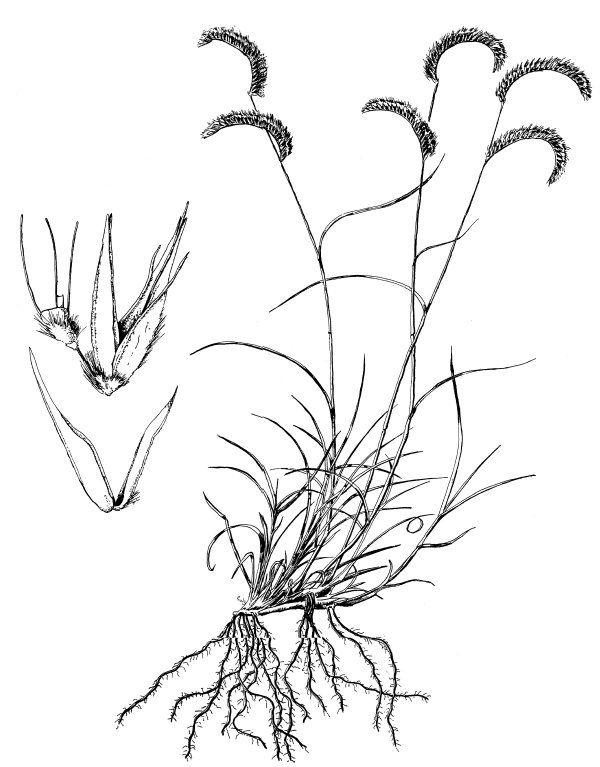
Bouteloua gracilis (H.B.K.) Lag. ex Griffiths Blue Grama Habit: Densely tufted perennial forming extensive sods. Culms: 20-50 cm. tall, tufted, erect, smooth, leafy at the base. Blades: 3-10 cm. long, 1-2 mm. wide, flat, or when dry involute, usually glabrous. Sheaths: Shorter than the internodes, striate. Ligule: Very short with few ciliate hairs. Inflorescence: Spikes 1-3, spreading, often strongly curved, 2-5 cm. long, the rachis not projecting beyond the spikelet. Spikelets: Pectinate, numerous (60 or more), crowded, about 6 mm. long, on short minutely pubescent pedicels, rachilla articulated above the glumes. Glumes: Persistent, awn-pointed, lanceolate, keeled, minutely scabrous, first narrow, 3-3,5 mm. long, second 5-6 mm. long, sometimes sparingly glandular on the keel and ciliate. Lemmas: Fertile lemma including the awn about 6 mm. long, lanceolate, pubescent, 3-awned, the central awn slightly longer, usually 4-lobed, with the lateral awns from the apex of lobes, the central from between two teeth or lobes. Palea: About the length of the lemma. Rudiment: About 5 mm. long, densely bearded at summit of rachilla joint, cleft to the base, the lobes rounded, the awns slender, about equal the tip of fertile lemma; one or two additional rudiments, broad and awnless, sometimes developed. Habitat: Plains and prairies. Kansas Range: West five sixths. Use: An important constituent of the plains and mixed prairies, a staple grazing grass throughout the year.